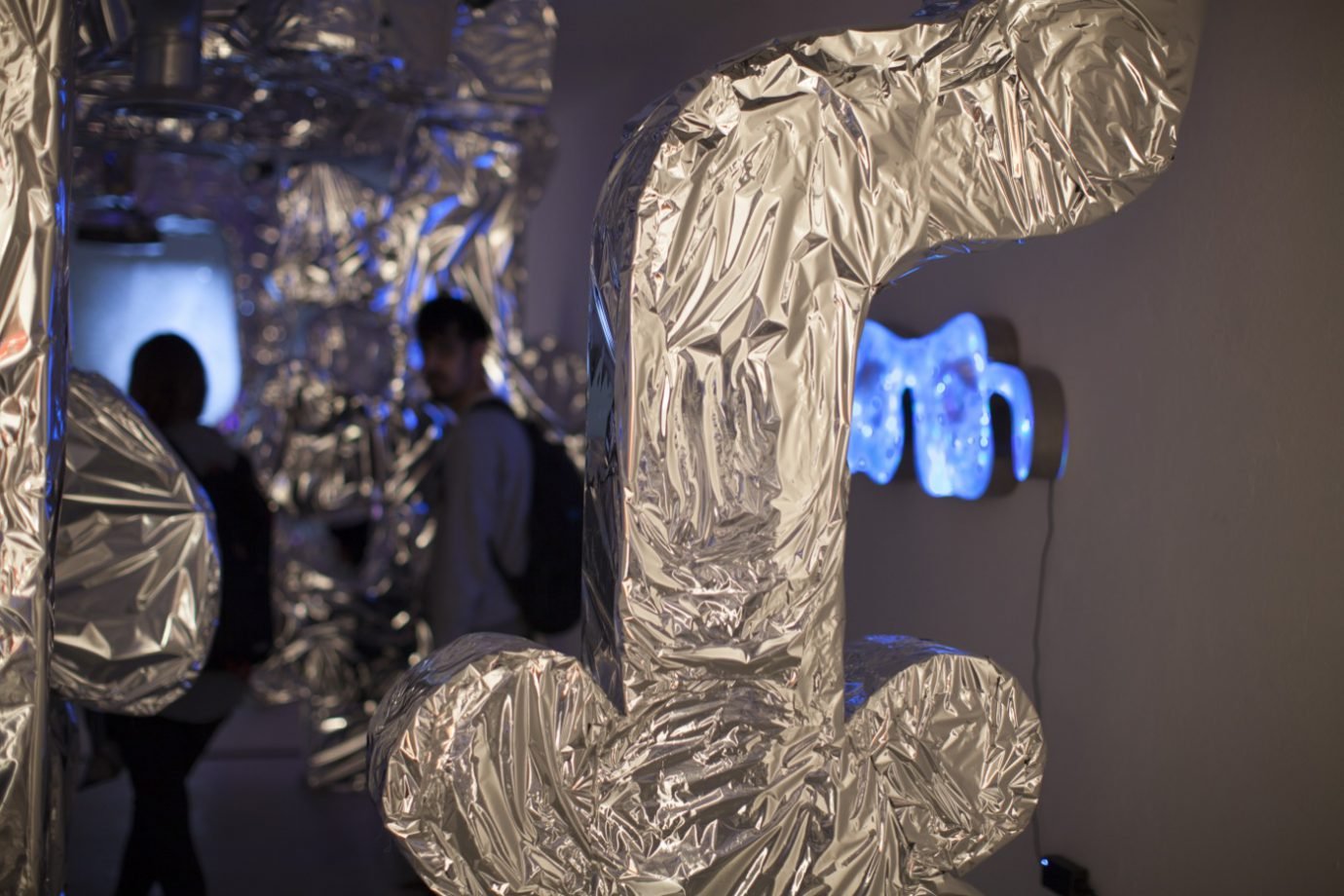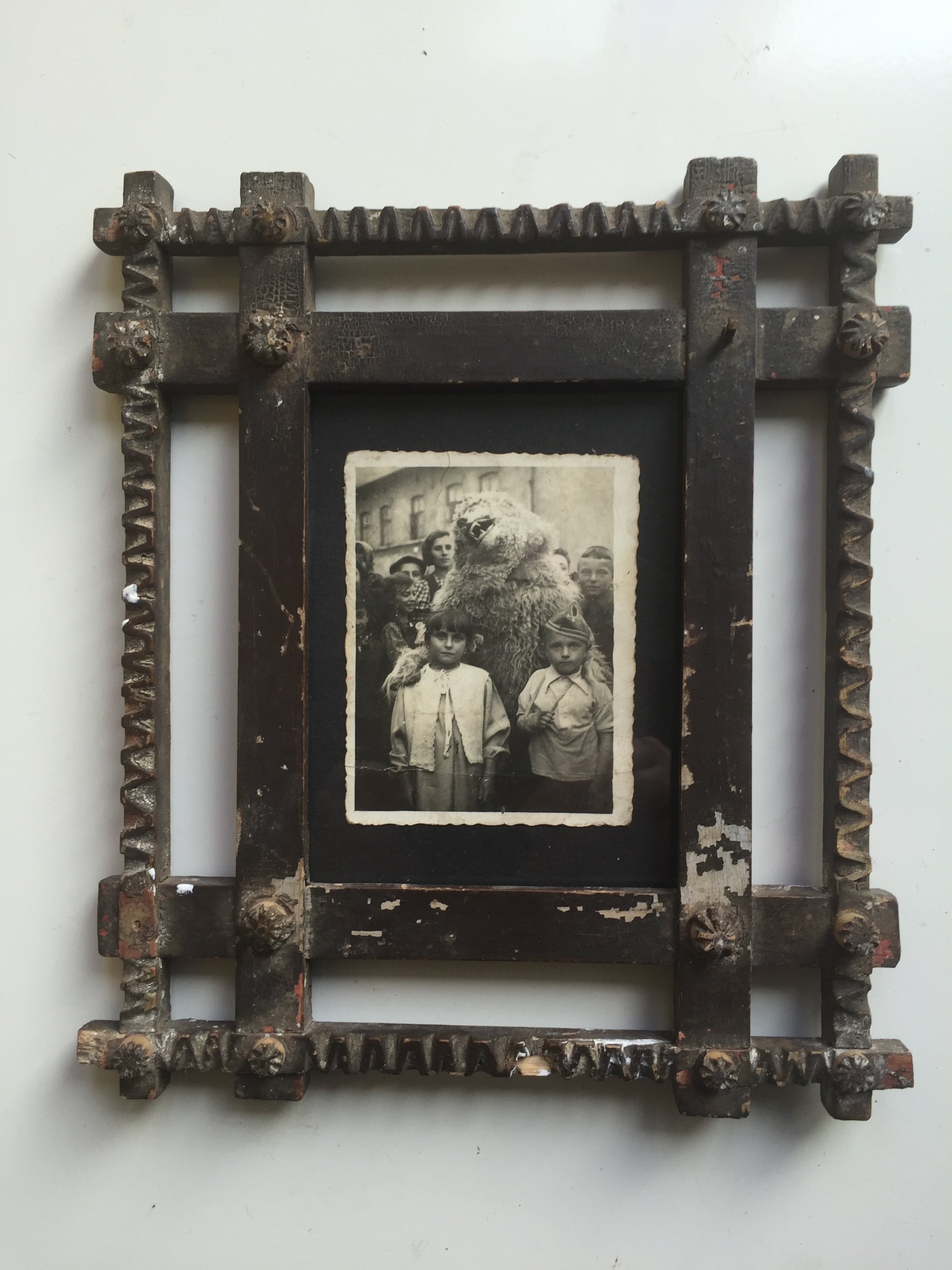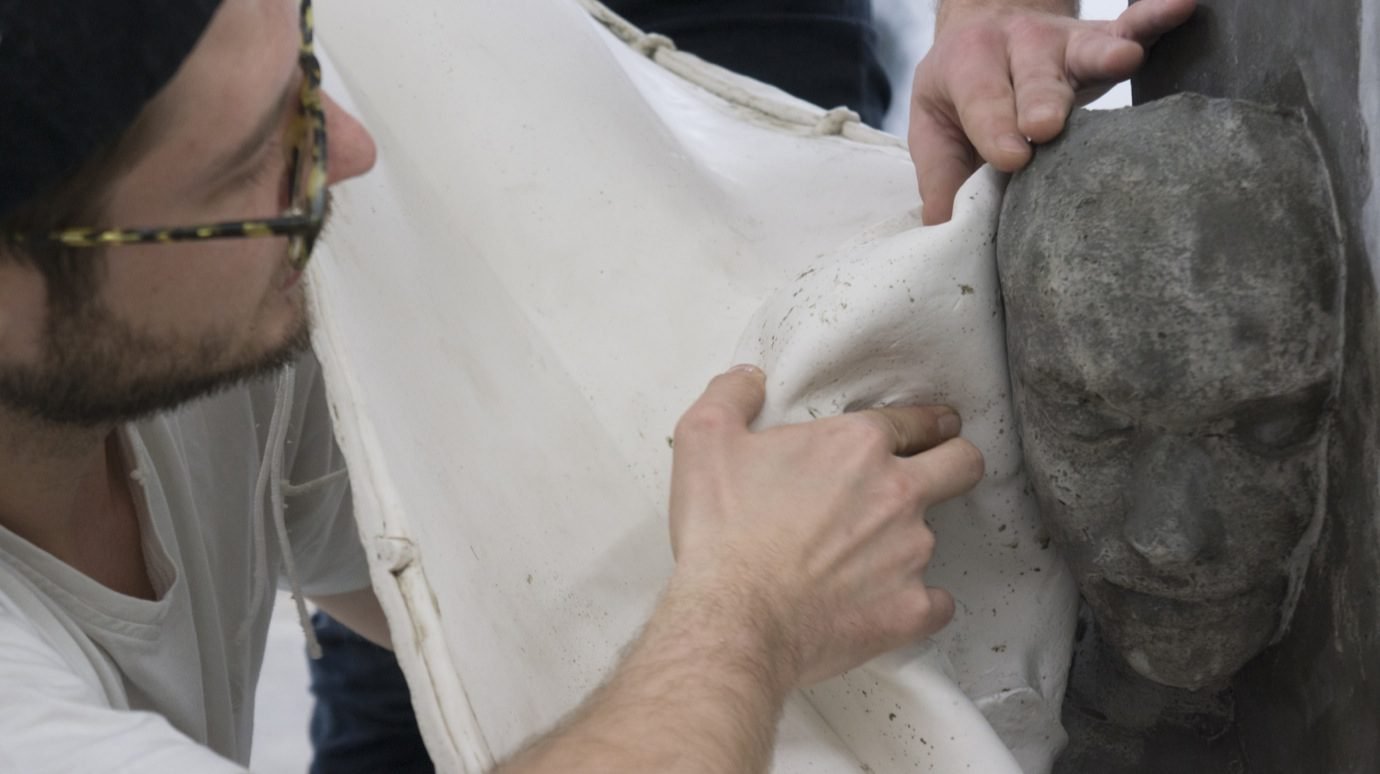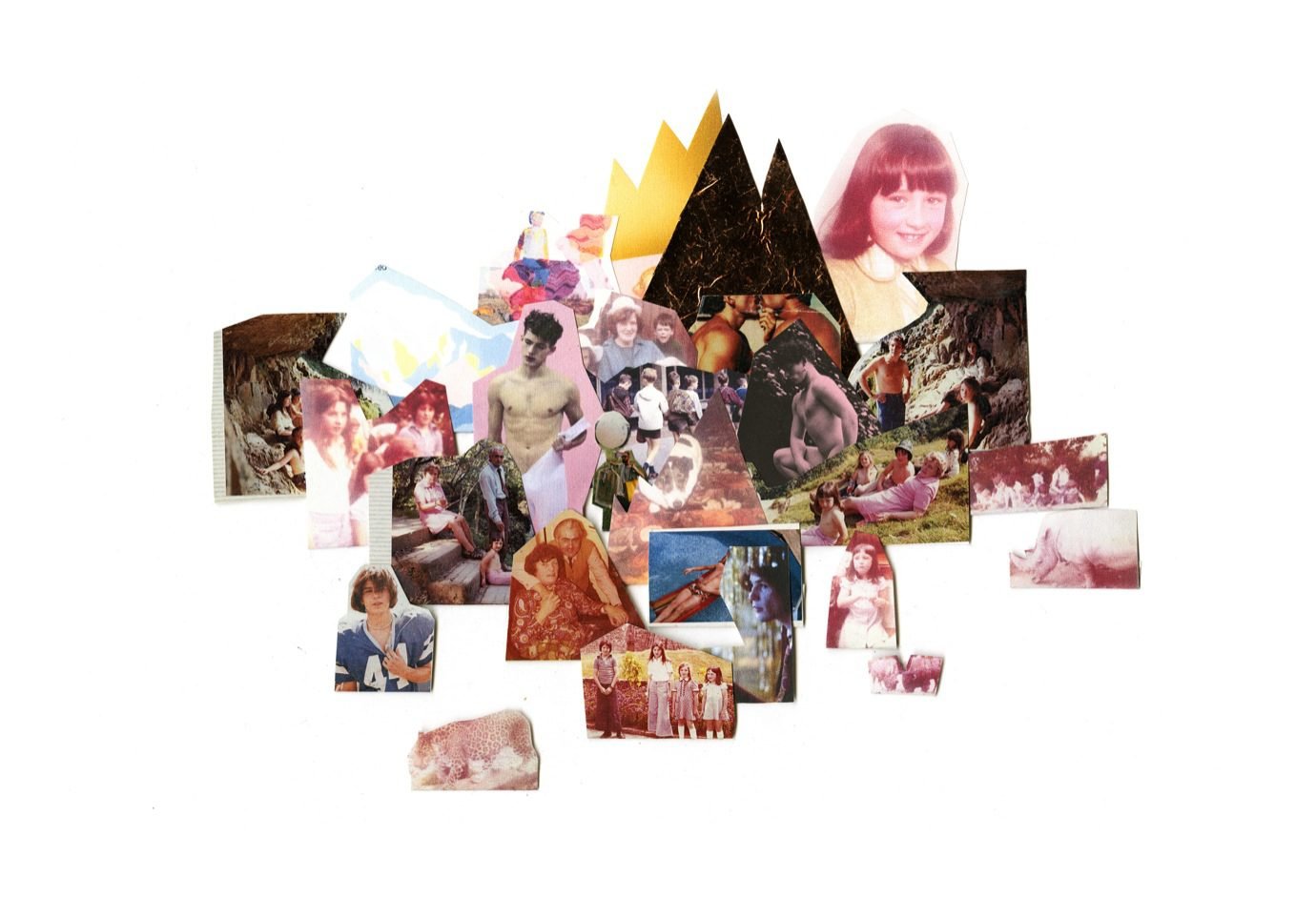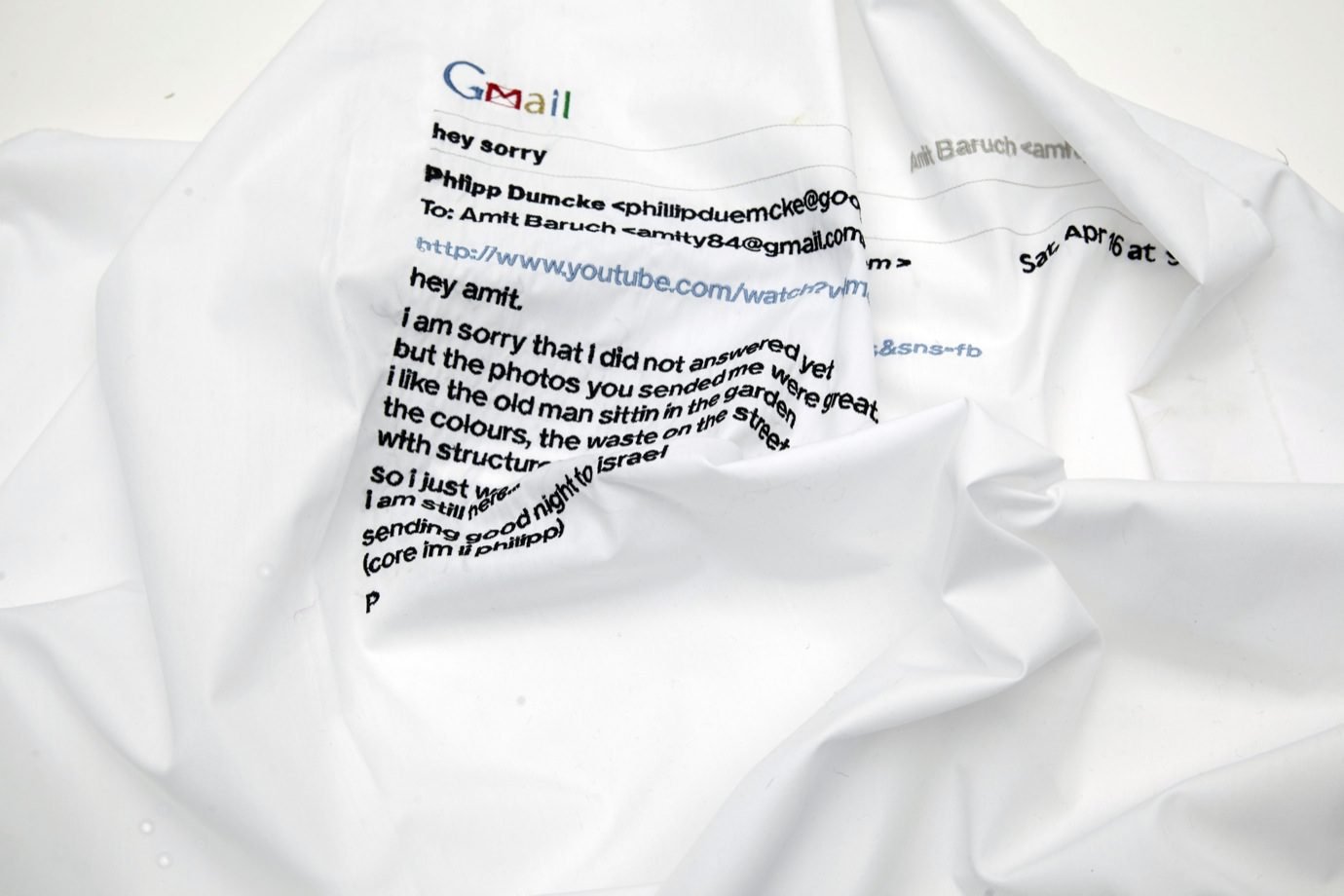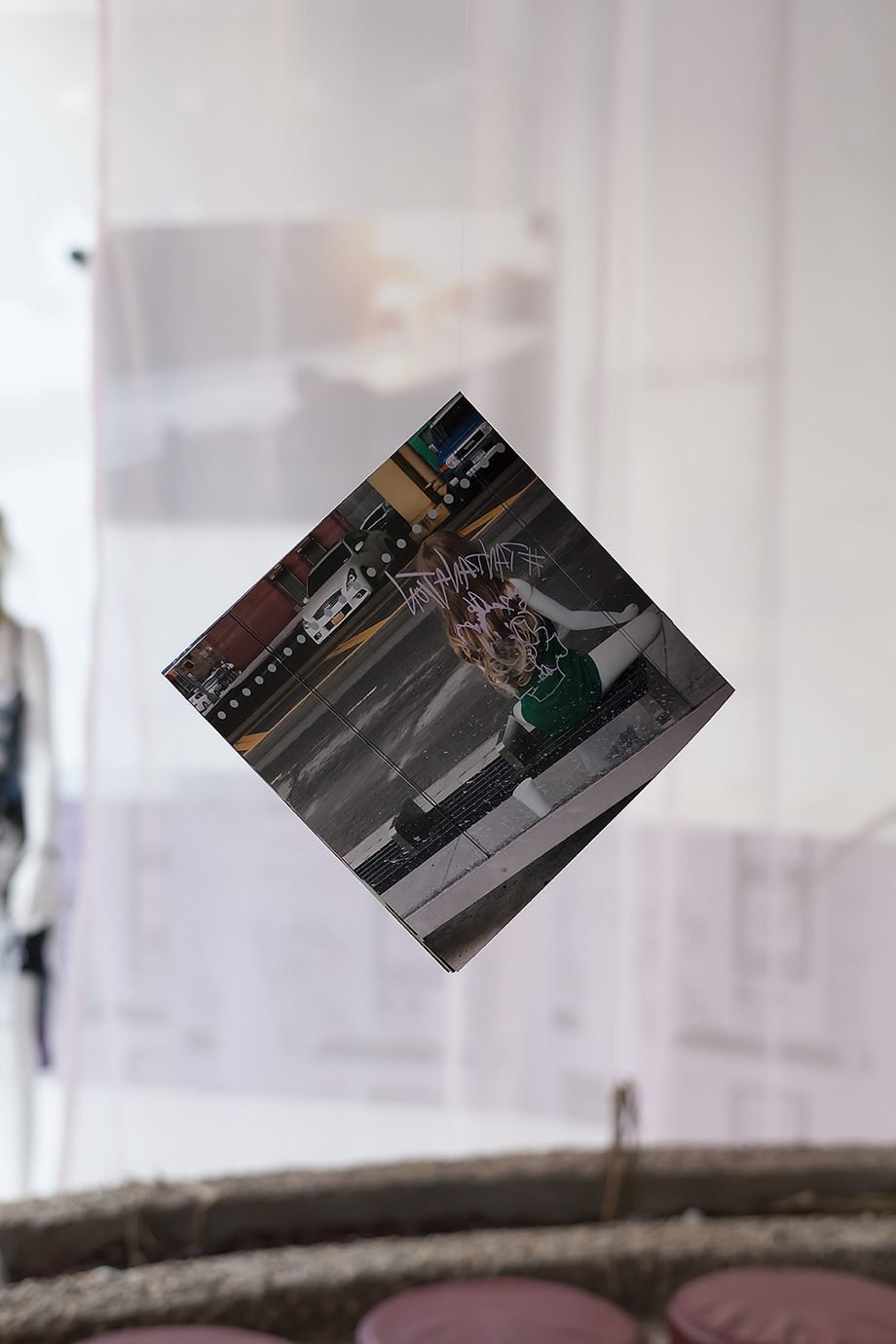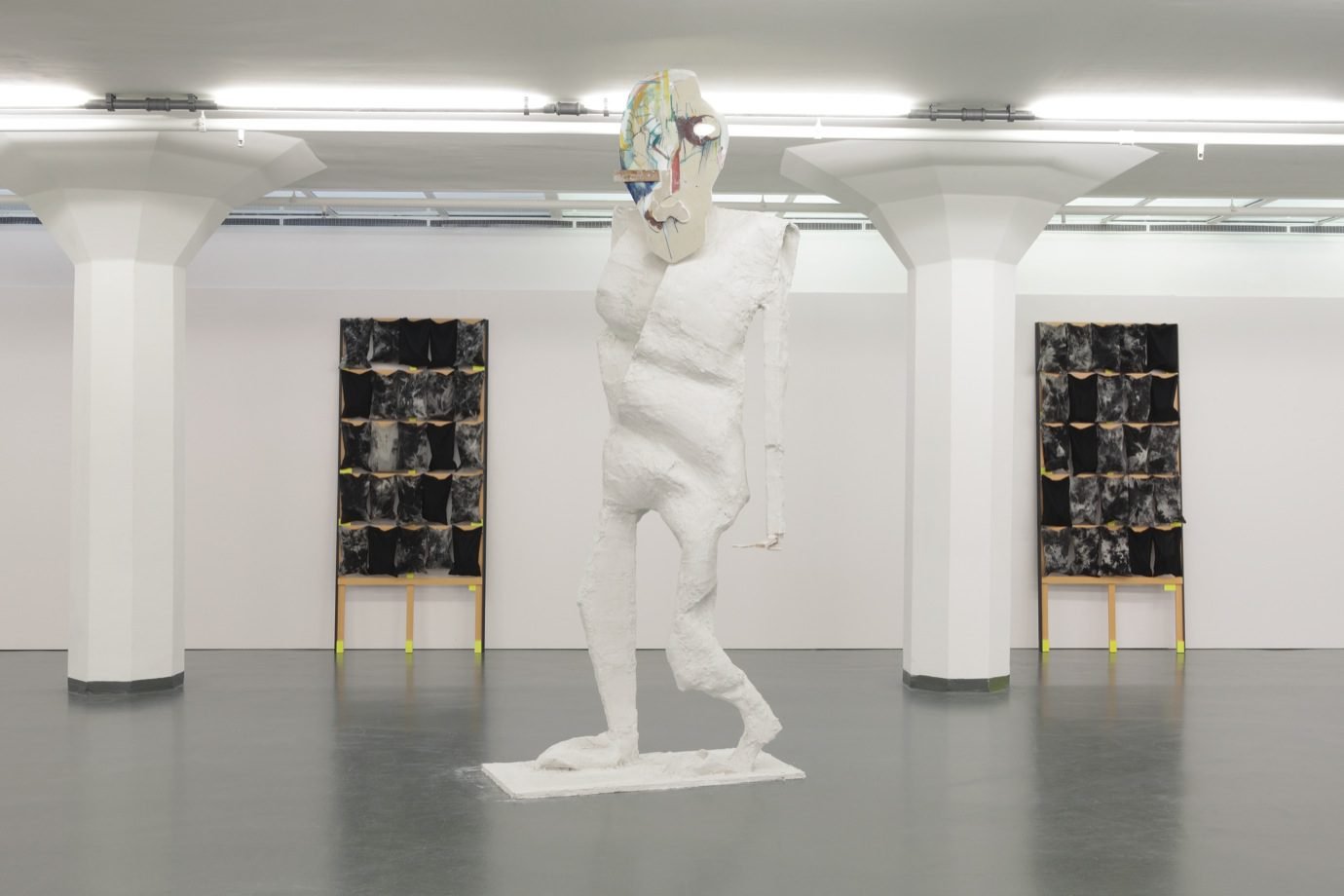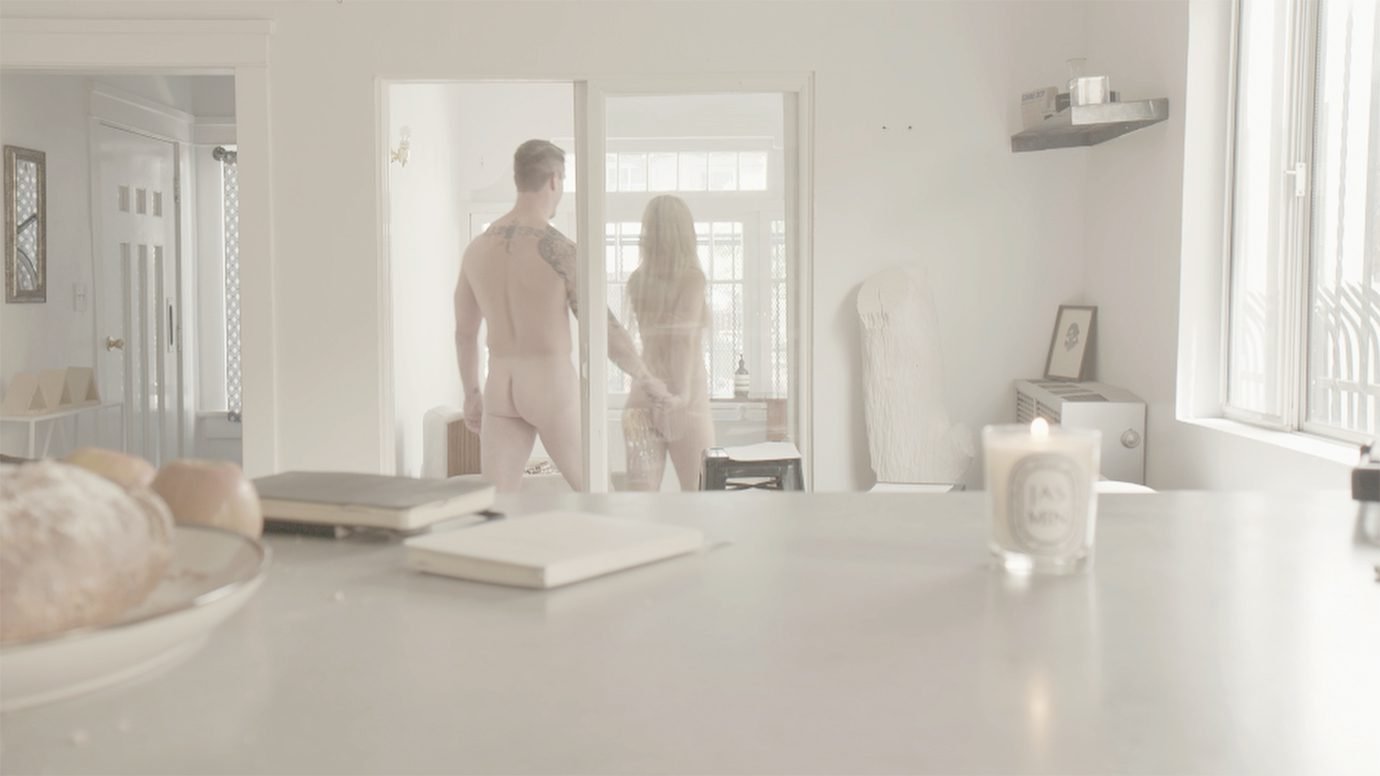All these pieces are unified by a refusal to make anything easy for the viewer. Over fortune cookies and amid the crowds, we caught up with the artists at the private view to talk about their inspiration, fascination with objects and what they themselves would write on their gravestone.
Louise Ashcroft and Nicholas Pankhurst (RCA) and Nicholas Abrahams (Exeter) are artists who channel and embrace the absurdities of human life. They spoke to us about their current group exhibition IT’S ALWAYS THE OTHERS WHO DIE at The Koppel Project, and the individual ways in which they question their own artistic worlds. The exhibition’s title is borrowed from Marcel Duchamp’s gravestone; it is a video by this influential figure which is rediscovered and transformed to become the inspiration around which the whole show is based. It ranges from a haunting collection of 1920’s photographs with a re-occurring polar bear, to a metallic forest reminiscent of early cinema sets. There is also the audio of Ashcroft’s mother crossing the Israeli border played through the echo of an old paint can and a sleeping fox in a vault.
Nicholas Abrahams
Have you always collected?
In terms of the photographs, yes. But I don’t think of myself as a collector, as I don’t collect anything valuable or even particularly rare — just things on certain themes or with a particular appeal. The pleasure comes in sharing them with other people. A lot of the things and films I’ve put in the show are not necessarily ‘art’, and I like that!
Where do you find inspiration for your videos?
One inspiration is early cinema — hence the video of shadow puppets and the restoration of the Marcel Duchamp film. Early cinema and their tricks have always fascinated me. I tried to show films that fit in with Nick Pankhurst’s installation, which itself seems to have something dark about it, like a set from the expressionist silent horror film The Cabinet of Dr Caligari.
I also find inspiration from chance and alchemy. For example, in the room with the table, the projection is of a new edit of a film I made with the Icelandic band Sigur Ros. When I was on tour with them, I would pick up discarded cigarette butts the band had smoked, volcanic ash from Iceland, even a champagne cork from a post-gig party — things that related to the band — and add them to the chemicals I developed the Super 8 film in. The colours and textures of the film are slightly haphazard and mysterious thanks to these secret additions.
In line with the Marcel Duchamp-inspired title of the exhibition, what would you have written on your gravestone?
There’s a great gravestone in Highgate cemetery where it just says ‘DEAD.’ Have you seen that one? I think it’s Patrick Caulfield. These are the things you have to think about. Just going to have to try to think of something witty. On one of the fortune cookies it just says ‘Meh’ – that’s my favourite one, it would be good on a gravestone.
Nicholas Pankhurst
“I THINK MEANING IS A TYRANNY IN PEOPLE’S LIVES, BECAUSE YOU HAVE TO DO THINGS THE RIGHT WAY TO FIT INTO LIFE.”
Abrahams uses dark humour and Ashcroft’s can be quite silly. Do you think humour is important in your work?
I’ve always felt that humour is a weird extension of your own reality. That’s why you laugh at a joke, because it’s too much realness for that moment in time. It’s clashing with realisms. When that twisting of anguish and reality meet up, that’s like commercially dark. Surrealism in a much nicer version of it. Rather than saying: ‘this is my art work and it’s meaningful because it doesn’t make sense’, you’re saying ‘this is my art work and it is funny because it doesn’t make sense’. I think meaning is a tyranny in people’s lives, because you have to do things the right way to fit into life.
What would you have written on your gravestone?
I always loved the guy who did the Looney Tunes cartoons, who had ‘That’s all folks’. I thought that was really good. I don’t know what I’d have, but I really hope that before I die I’ll figure it out.
Louise Ashcroft
Nicholas Abrahams collects photos of polar bears, do you have a similar obsession with things?
Yeah. I like to collect things from the world, and add them to different situations. In some ways it’s just collage, where you create a relationship between two things in order to reveal a story that wasn’t there in the first place
Have you always worked that way?
I’ve always hoarded things. This show is particularly surreal. Often my work will involve comedy in some way. For example, my work has consisted of trying to overthrow capitalism — for example, I would take a vegetable from Ridley Road Market from an African or Asian food store that I don’t recognise; take it into Tesco and try and buy it as if it was just in the store, and watch what happens when they can’t categorise this thing. And they have to ask the supervisor or manager. You are basically taking a system that works, adding an alien to that system (a believable alien) and watching what happens when something has shifted a tiny bit. I suppose my work in the past has been more about intervening in the real world, whereas this time I’ve been able to enter my own construction a little bit more.
What would you have written on your tombstone?
I think Spike Milligan has ‘I told you I was ill’ — I quite like that. I’ve got lots of one liner things that I say. Maybe I’d just have ‘predators are the new personal trainers’ or the title of my piece, which is ‘Homeopathy is just a very refined form of pollution.’ I like to come up with one line statements, maybe I’d just have a long list of them. No one has anything good written, no one wants to Rest in Peace. I’ll think about that, I’ll plan it.
IT’S ALWAYS THE OTHERS WHO DIE is on until 5 September 2016 @ 93 Baker Street, W1A 4SD

